#38 in Vietnam
Trứng Vịt Lộn: Basic Information
Pronunciation
Alternative Name(s)
Dish Type
Course
Mealtime
Popular Variations
Trứng Vịt Lộn: Ingredients and Preparation
Main Ingredients
Main Cooking Method
Preparation Process
Trứng Vịt Lộn: A Deep Dive
Cultural Significance
Taste
Texture
Aroma
Color
Serving Style
Serving Temperature
Accompaniment
Occasions
Seasons
Special Diets
Calories
Popularity
Popular Similar Dishes
- Trứng Cút Lộn
- Century Egg
- Salted Duck Egg
- Smoked Egg
- Soy Egg
- Tea Egg
Popular Dining Area
Trứng vịt lộn (or hột vịt lộn or trứng lộn) is an exotic and traditional Vietnamese street food featuring fertilized duck eggs that have been incubated for about 19 to 21 days old.
In fact, younger, sweeter eggs are typically harvested on the 17th or 19th day, while more mature eggs are taken out on the 20th or 21st day.
Trứng vịt lộn is a treat for adventurous eaters as it contains an immature duck embryo inside. However, it has a rich, savory flavor with a firmer texture from the partially developed duck embryo.
In Vietnam, boiling eggs is the most basic way to consume hột vịt lộn. In the reading, I’ll show you the proper method to boil these eggs. In fact, the way to enjoy them varies slightly based on region.
Furthermore, though trứng vịt lộn might be a scary treat, it is a nutritious food with several benefits that I’ll explain in detail later.
But besides these good things, there are also some cautions that you need to know before consuming it.
Finally, I’ll summarize its advantages and disadvantages, address some regularly asked concerns, and introduce other delights that are similar to trứng lộn. Let’s dig in!
Key Points
Trứng Vịt Lộn Images
How To Boil Trứng Vịt Lộn Properly?
Boiling trứng vịt lộn doesn’t require any hard technique, but you should pay attention to the timing. The below guide will show you three essential steps to cook it.
Step 1: Preparing the Cooking Liquid
Add water with a pinch of salt and a few slices of crushed ginger to a pot. For more flavor, you can use coconut water.
Step 2: Cooking the Eggs
Once the water starts to simmer, gently place the eggs into the pot using a spoon, ensuring they don’t crack. When the water starts to boil, reduce the heat to low, cover the pot with a lid, and let the eggs cook for about 15-18 minutes.
Step 3: Finishing
After cooking, turn off the heat but keep the pot covered, allowing the eggs to continue steeping in the hot water for an additional 5 minutes. It helps the eggs to fully absorb the flavors.
Once cooked, it’s time to savor this interesting delicacy.
What Are Common Ways To Eat Trứng Vịt Lộn in Vietnam?
In Vietnam, the way of eating trứng vịt lộn varies by region.
- Northern Vietnam: People typically crack the boiled egg into a small bowl, adding Vietnamese coriander (rau răm), salt and pepper, and kumquat juice, then eat it with a spoon. Additionally, they also add these eggs to hot pots to enrich the broth.
- Central Vietnam: The egg is cracked slightly and peeled partially, then the liquid is sipped to prevent spillage. The rest is eaten as the shell is peeled away.
People here believe that doing it will reduce the gamey taste. Some places in the region often pair these eggs with sweet and sour pickled papaya.
- Southern Vietnam: The egg is placed in a small cup with a larger end. To eat, a small hole is made at the top of the egg, and the inside is scooped out with a spoon. Many love to add salt and pepper to the eggs and sip the juice inside it first.
In the South, locals also stir-fried these eggs with tamarind sauce, buttery garlic sauce, or chili sauce to enhance the flavor.
No matter which way of eating it, trứng vịt lộn is a great choice since it contains various benefits. Continue reading to learn more!
What Are Trứng Vịt Lộn Health Benefits?
The National Nutrition Council of the Philippines highlights that trứng vịt lộn (or balut) is a nutritious food with several health benefits. It contains:
- Vitamin C and beta carotene support the immune system by fighting free radicals.
- Niacin, riboflavin, and thiamin assist in energy metabolism.
Moreover, each egg offers 14 grams of protein and is a good source of calcium, iron, and phosphorus, all within just 188 calories.
Though there are several good aspects about hột vịt lộn, it’s also important to consider some precautions when enjoying it.
What Are Precautions When Savoring Trứng Vịt Lộn?
You need to be aware of certain precautions to ensure a safe and enjoyable experience with hột vịt lộn. Here are two key notes, such as:
- Limit Consumption: It’s advisable not to eat more than two trứng vịt lộn per week, as excessive consumption can increase blood cholesterol levels, leading to heart diseases.
- Don’t Drink Tea Immediately After: It’s not recommended to drink tea right after eating trứng vịt lộn. The tannic acid in tea can interact with the egg’s protein, making it harder to digest.
To sum up, check the next part, which is about both advantages and disadvantages to have a broader view of this distinctive delight.
Pros and Cons of Eating Trứng Vịt Lộn
Let’s weigh the benefits and drawbacks of this Vietnamese egg style.
Pros
Cons
Next, keep in mind the regularly asked questions for more details.


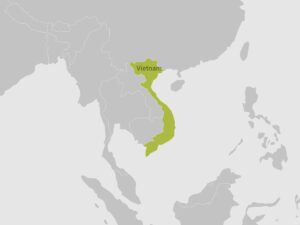
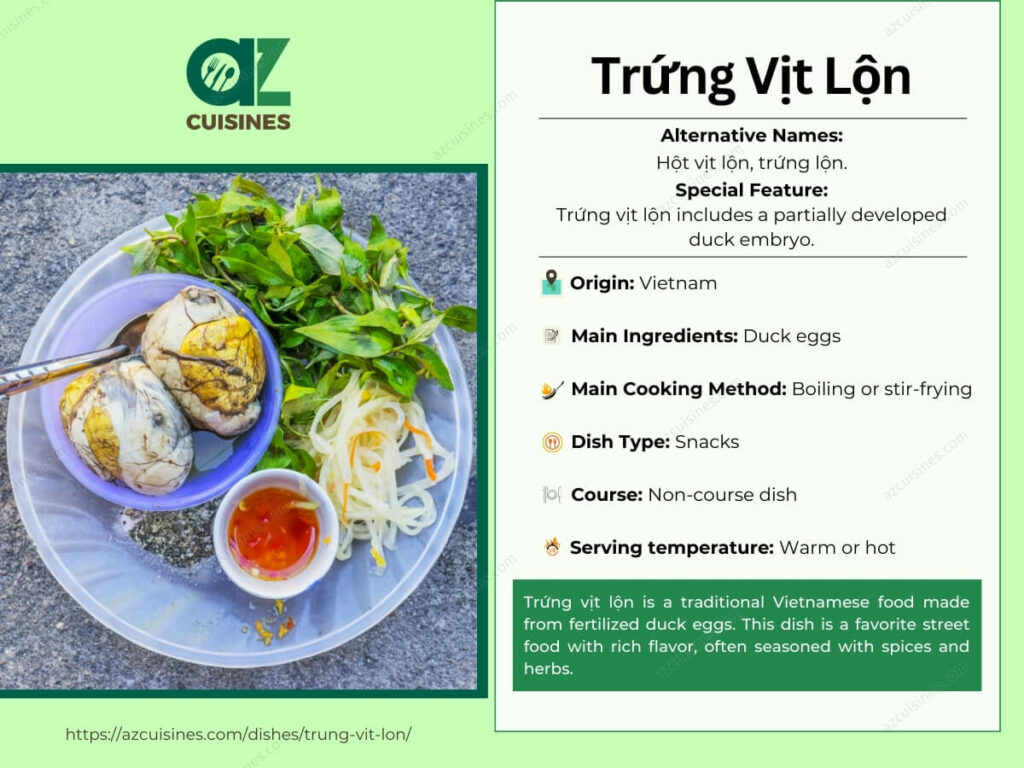
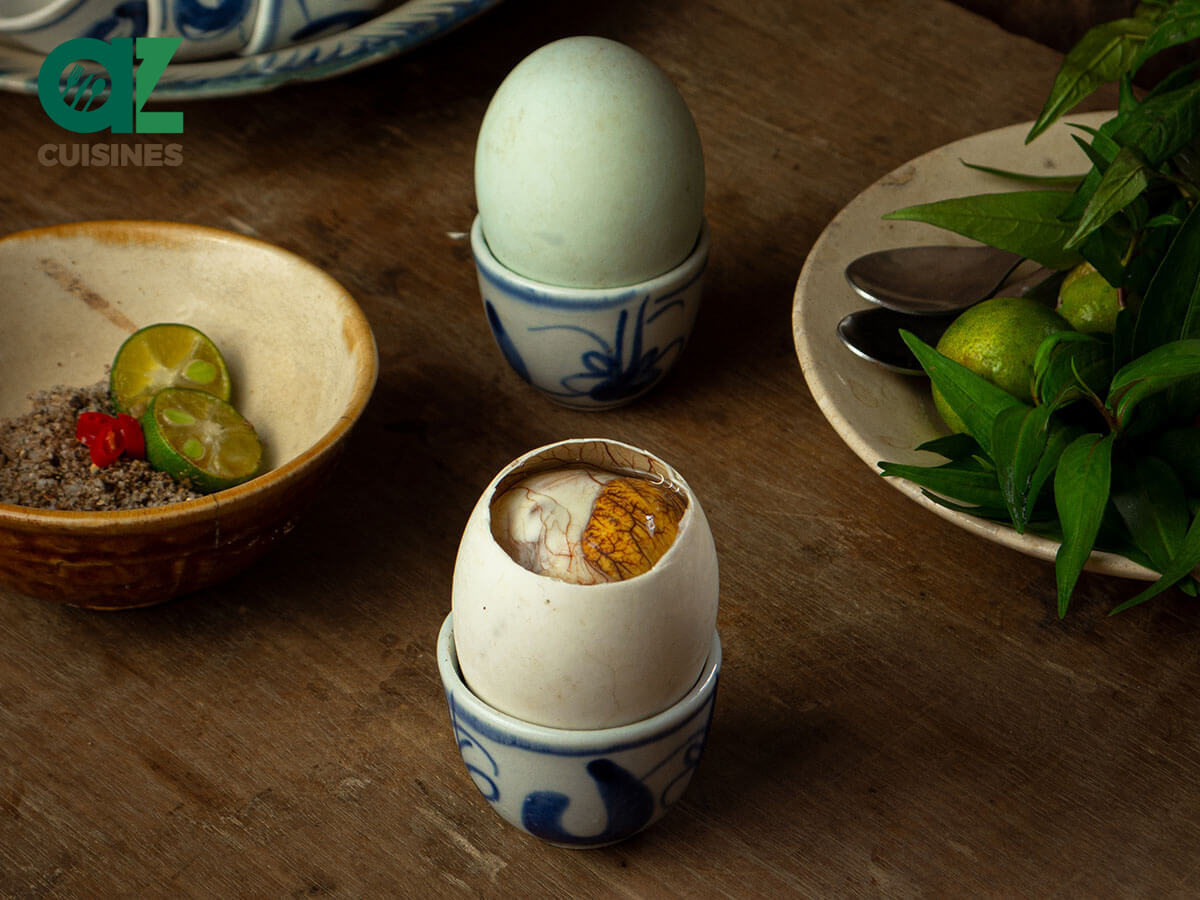
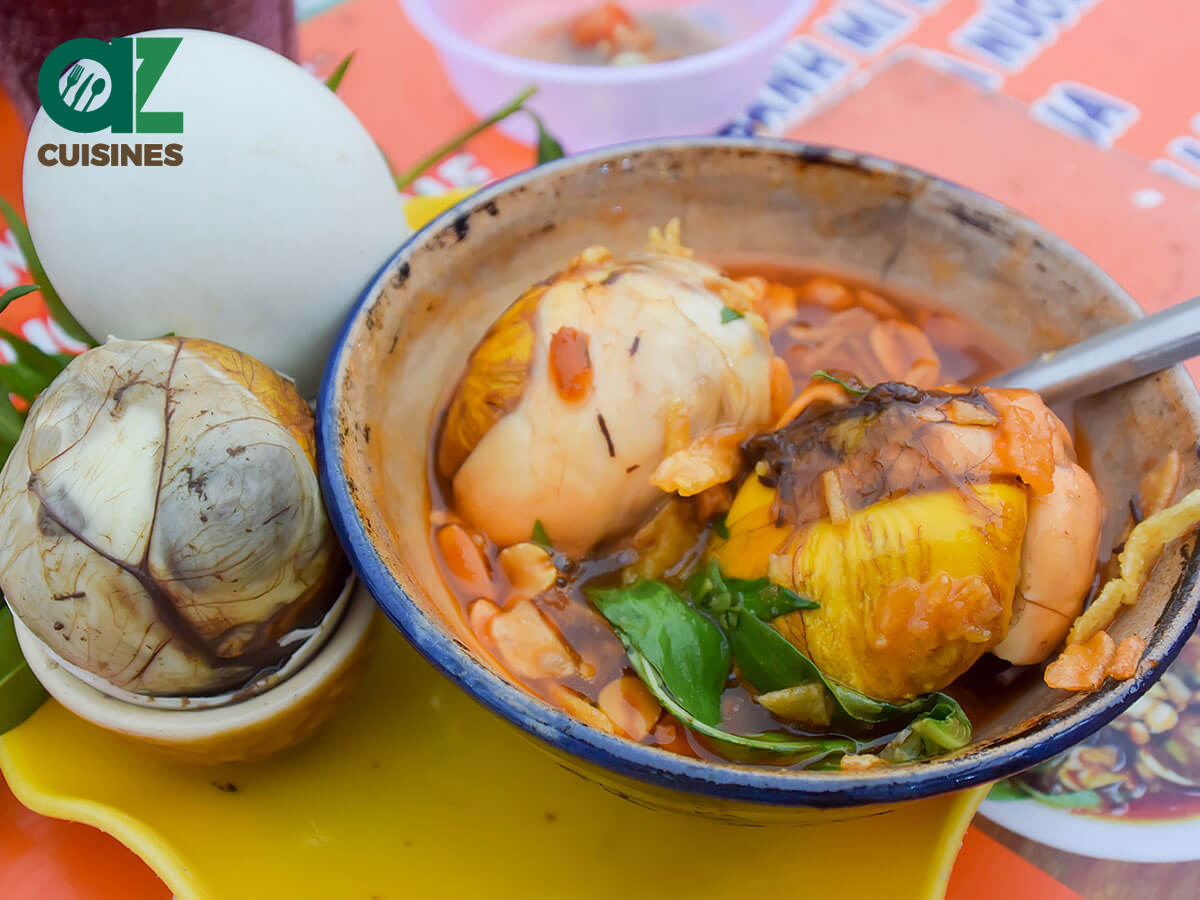
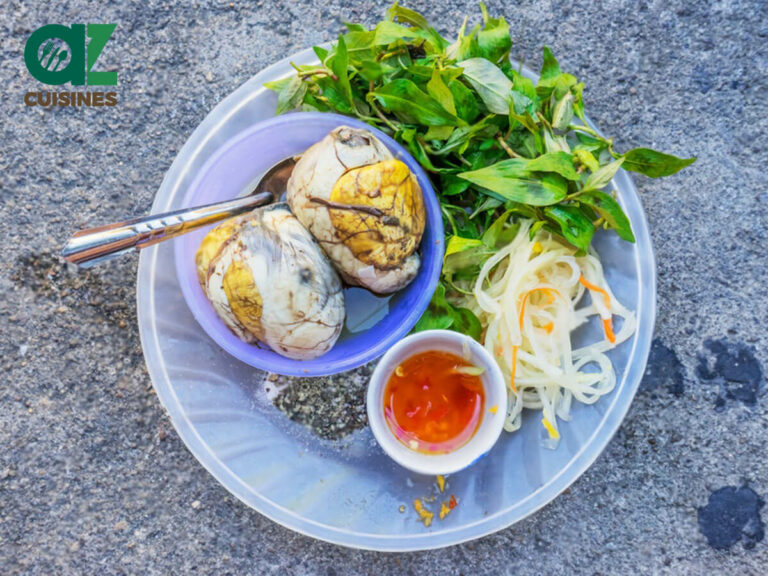
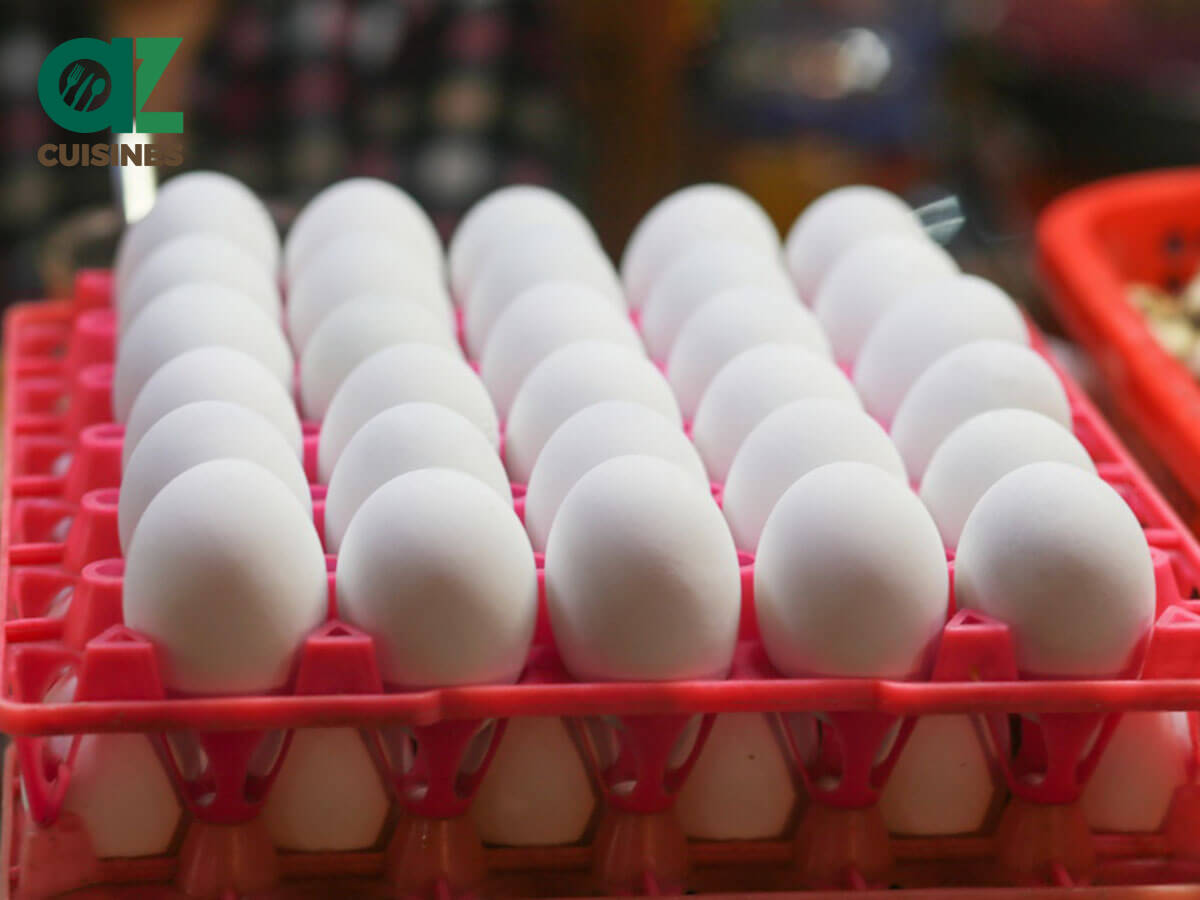
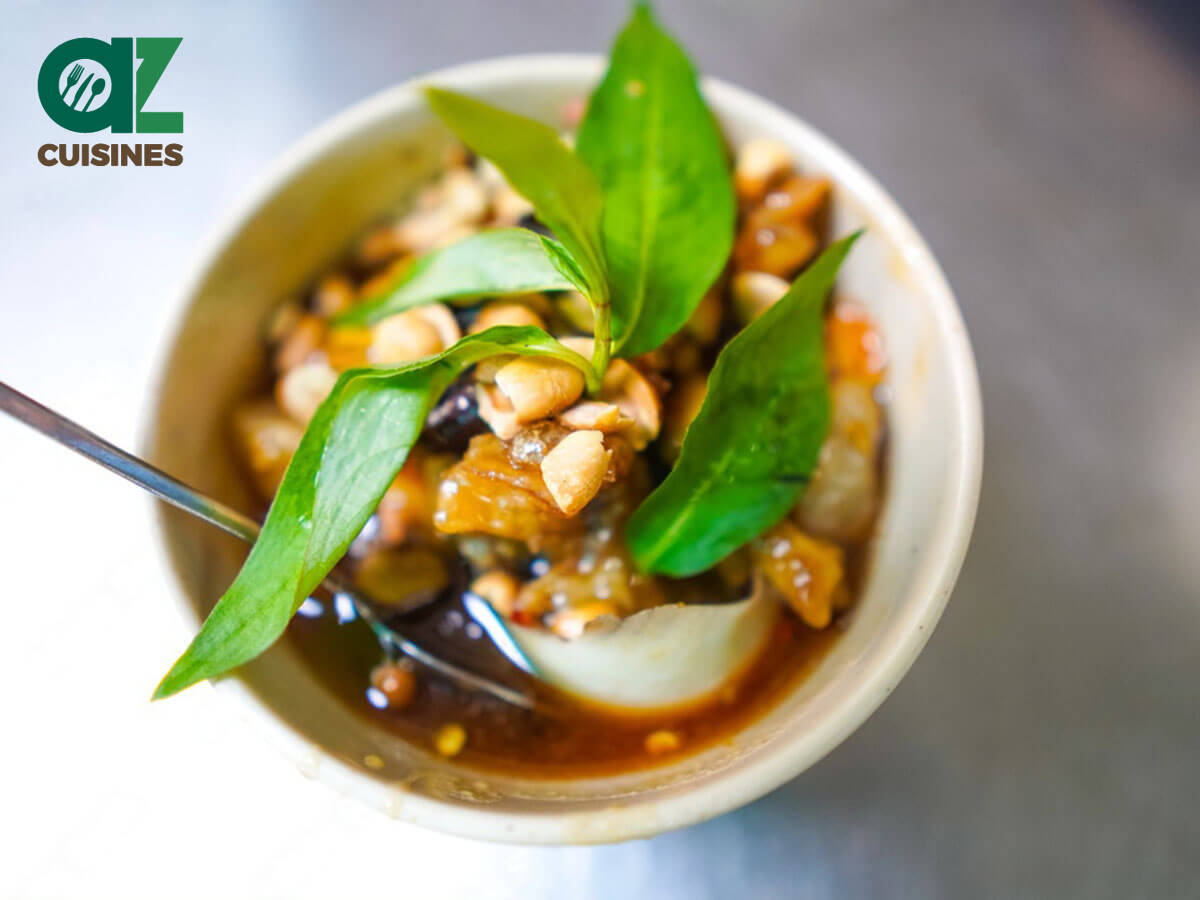
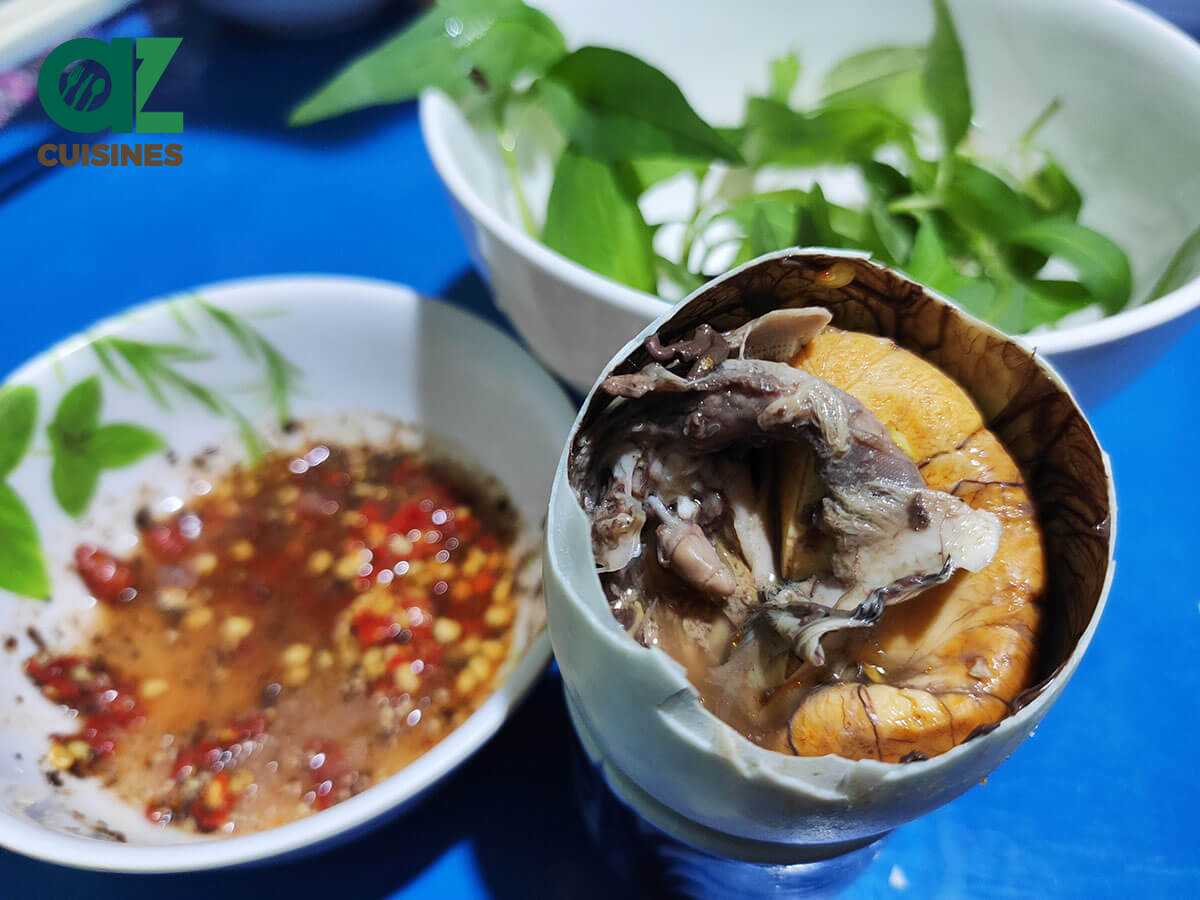
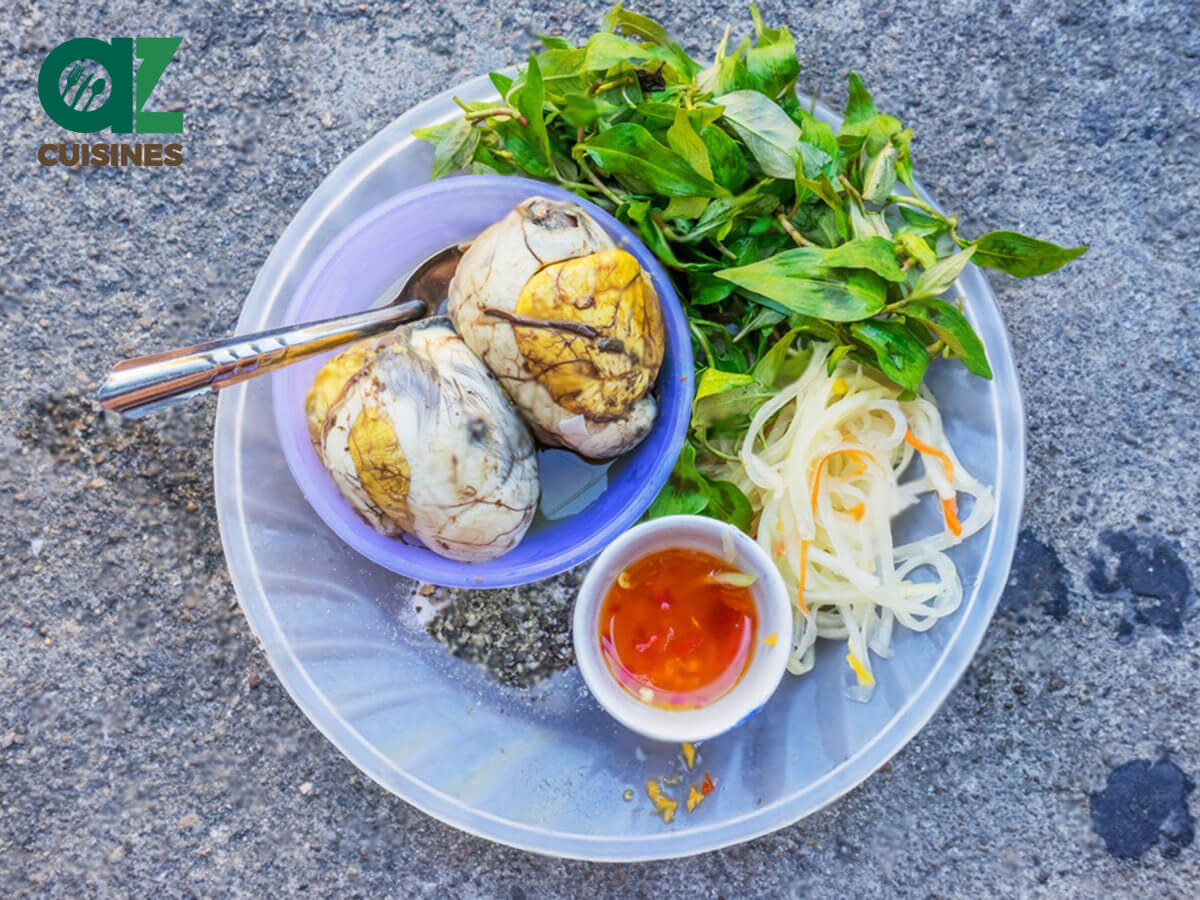
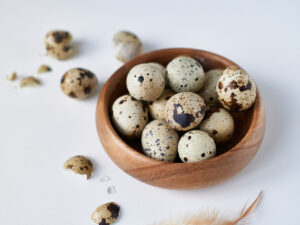
Truc Tran (Kris)
Senior Food Editor
Expertise
Home Cooking, Meal Planning, Recipe Development, Baking and Pastry, Food Editor, Cooking-video Maker, Vietnamese Food Evaluation Expert
Education
Truc Tran (Kris), an experienced food writer and editor, is great at exploring and describing global cuisines, from simple street food to fancy dining. In her writing, she skillfully mixes different flavors, cooking methods, and culinary traditions, showing the unique character of various cultures through their food and drinks. On azcuisines.com, Kris highlights her knowledge, especially in Asian cuisine and worldwide traditional dishes.